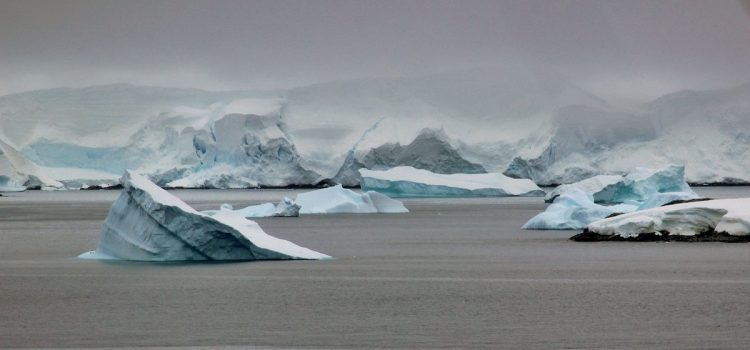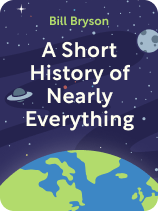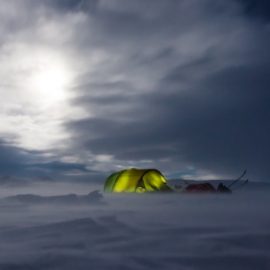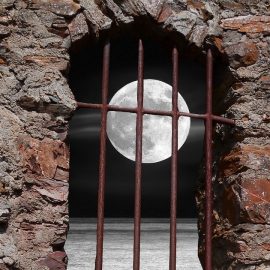

This article is an excerpt from the Shortform book guide to "A Short History of Nearly Everything" by Bill Bryson. Shortform has the world's best summaries and analyses of books you should be reading.
Like this article? Sign up for a free trial here.
What causes ice ages? How much of the Earth has been covered by ice? Are we in an ice age now?
The geological history of the Earth indicates that ice covers much of the planet at times and, at other times, it doesn’t. Author Bill Bryson looks into the ice age cycle to understand what scientists know and how.
Keep reading for a brief overview of the ice age cycle.
The Ice Age Cycle
According to Bryson’s exposition, ice has played a significant role in shaping the planet’s surface. All over the world, we find valleys that were carved out by glaciers as well as moraines—deposits of rock and sediment that were carried along by glaciers and left in piles when the glaciers melted. From this, scientists infer that almost all of the Earth’s surface has been covered by ice at some point. Scientists believe there’s an ice age cycle—the significant ice coverage comes and goes.
Bryson remarks that, while scientists agree that Earth has had numerous ice ages, there’s no consensus about exactly what causes ice ages to begin or end. Slight variations in Earth’s orbit or the tilt of its axis may be a factor, as they would change the intensity of sunlight striking the Earth. Volcanic eruptions could also play a role, either by creating plumes of ash that block sunlight and bring down global temperatures or by releasing large amounts of greenhouse gasses, raising global temperatures.
Furthermore, Bryson explains, there’s evidence that global temperatures sometimes rise or fall enough in just a few decades to bring on an ice age or signify the end of one.
He also points out that, technically, we’re in a mild ice age right now, because Earth has polar ice caps and large temperate climate zones that are snow-covered in the winter. Fossil evidence indicates that tropical climate zones extended from the equator all the way to the poles for much of Earth’s geologic history.
(Shortform note: It’s debatable whether or not we’re currently in an ice age because the definition of an ice age is somewhat subjective. Most sources define an ice age as a period of time during which a substantial portion of Earth’s surface is covered by ice. But just how much is “substantial?” Since ice caps currently cover Antarctica and much of Greenland, some sources agree with Bryson that we’re in an ice age. But other sources say the last ice age ended about 13,000 years ago. And, others, while acknowledging a similar time frame for the last major ice age, make mention of a minor ice age that started about 500 years ago and ended about 200 years ago.)
| Modeling the Ice Age Cycle As computer models of global climate have become more sophisticated, scientists think they’re getting closer to understanding why ice ages come and go—and why they appear to have come and gone at regular intervals over Earth’s geologic history. The answer, according to the latest simulations, has to do with the interrelationship between Earth’s topography and the currents in the atmosphere and oceans that drive much of the planet’s weather. Both global warming and global cooling tend to be self-reinforcing: Ice sheets absorb less heat from sunlight than land does, so the more ice accumulates on Earth, the less heat Earth receives from the sun, and the lower temperatures fall, causing still more ice to accumulate. Conversely, if ice sheets are receding, the more they recede, the more heat Earth receives, causing them to melt further. But what triggers the transition between these two processes? Scientists now think it has to do with ocean currents and atmospheric air currents, which play a central role in shaping Earth’s weather. As ice sheets accumulate, ocean levels drop, and thick ice sheets on land fill in and smooth out the topography. When the changes to Earth’s water levels and topography reach a certain threshold, ocean currents and atmospheric air currents shift, resulting in different weather patterns. Some scientists now think this is the dominant mechanism in triggering the onset or end of an ice age. |

———End of Preview———
Like what you just read? Read the rest of the world's best book summary and analysis of Bill Bryson's "A Short History of Nearly Everything" at Shortform.
Here's what you'll find in our full A Short History of Nearly Everything summary:
- An accessible overview of the natural sciences
- A full history of the universe, Earth, and life as we know it
- A look at the unknowns and controversies that still exist in the sciences






